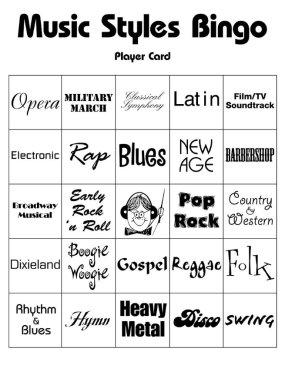Урок Музика, різновиди музики.
Урок "Музика", містить ігрові технологій- гра Бінго. Розвиток усного мовлення. Урок може проводитись двома вчителями. З використанням аудіоматеріалів.
UNIT 4. LISTENING TO MUSIC January, 16 8 B
Тема. The Mystery of Music. Grammar Revision
Мета: вдосконалювати навички читання й усного мовлення з опорою на вивчені лексико-граматичні структури; продовжувати формувати навички непідготовленого усного мовлення за проблемними ситуаціями; розвивати спостережливість, уяву й естетичне сприйняття навколишнього середовища; сприяти розвитку логічного і критичного мислення, інтересу до поставлених завдань.
ХІД УРОКУ
- Підготовка до іноземного мовлення
Music styles
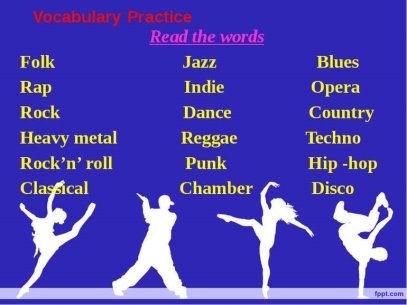
Фонетична й мовленнєва зарядка.
III. Основна частина уроку
a) Ex. 1, р. 90 — Listen and read a poem. Say why the author says that music is everywhere:
· Hum — a low continuous sound
· Honeybee — a black and yellow flying insect that can sting
· Shiver — to shake slightly because you’re cold, frightened, excited
· Murmur — to say something in a soft quiet voice that is difficult to hear or understand
· Moan — to make a long deep sound, usually expressing unhappiness, suffering or pleasure
· Surge — a sudden, strong forward or upward movement
· Rattle — to make a series of short loud sounds when hitting against something hard.
Mr. Webster reads the poem
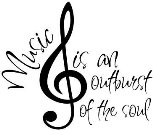
Music…
Is everywhere.
In the birds of the air.
In the hum of the honeybee.
In the song of the breeze
as it shivers the trees.
In the river that murmurs
over the stones.
In the snow wind that moans.
In the surge of the sea
lapping the shore.
In the roar of the storm
rattling the door.
In the drum of the rain
On the windowpane.
Music is here.
Filling our ear.
By Ann Bonner
Alina b) Ex. 2, p. 90 — Look at the pictures. Say where the people are, what they are doing, what you think their age is. Do they enjoy listening to the music? What kind of music do they listen to?.
Grayson reads the text with correct answers
c) Ех. З, р. 91 — Listen and read the text. Say where you think music tunes come from.
Use the words from the box
life language artists culture composers tune routine songs melodies lyric
Music is a universal (1) ..... language . It offers up refreshment from our daily (2) ..... life . It washes away the dust of everyday (3) .....routine from our souls.
Music has accompanied people through the ages with wonderful (4) ....., tune harmony and (5) ..... lyric . Ancient people listened to the sounds of nature and believed in their strong power over them. Music, in many ways, has become one of the central ways in which people of different nations pass on their traditions.
Native music in any (6) ..... culture is creative and very much alive. Contemporary music is not static either.
Today’s (7) ..... artists and (8) ..... composers use their national tradition in music as their starting point and the main source of inspiration.
Music is the art that speaks most openly to us: a child’s (9) ..... songs brings a smile, (10) ..... melodies sounds turn towards the soul and mind, and a waltz makes us dance.
Music talks to our heart and soul. It carries our culture to the next generation.
Music opens the way into the future.
· Arise emotions — refreshment from routine — wash away the dust
· Accompany people — beats tapped out — digital tunes — souls
· Enchanted by — contemporary — inspiration — the next generation
d) Ex. 4, p. 91 — Work with teacher. Take turns to ask and answer the questions.
· Why is music called a “universal language?”
· How does music communicate to different people?
· What do our emotions depend on?
· What kinds of sounds did the ancient people listen to?
· How has the music changed through centuries?
· What helps modern composers make their expressions more personal?
e) Ex. 5, p. 91 — Match the parts (1—8) to the parts (a—h) to make word combinations.
· To offer up refreshment from our daily life
· To arise various emotions
· To use something as a starting point
· To wash away the dust of everyday life
· To be enchanted by the mystery of music patterns
· To tap out the first beats
· To be the main source of inspiration
· To accompany somebody through the ages
f) Ex. 6, p. 92 — Say what role music plays in your life. What emotions does it arise in you? Use the phrases from Ex. 5.
g) Ex. 7, p. 92 — Write the following sentences in the Future Simple Passive Voice.
Game @bingo@
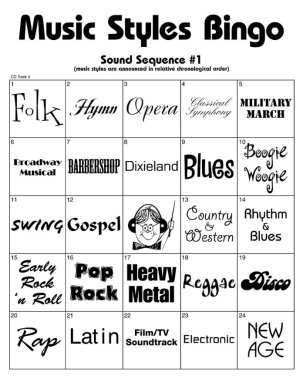
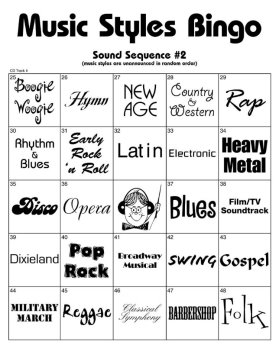
IV. Завершальна частина уроку
Домашнє завдання
Ех. 8, р. 92.
Підсумки уроку
Учитель підбиває підсумки уроку й оцінює роботу учнів.


про публікацію авторської розробки
Додати розробку

